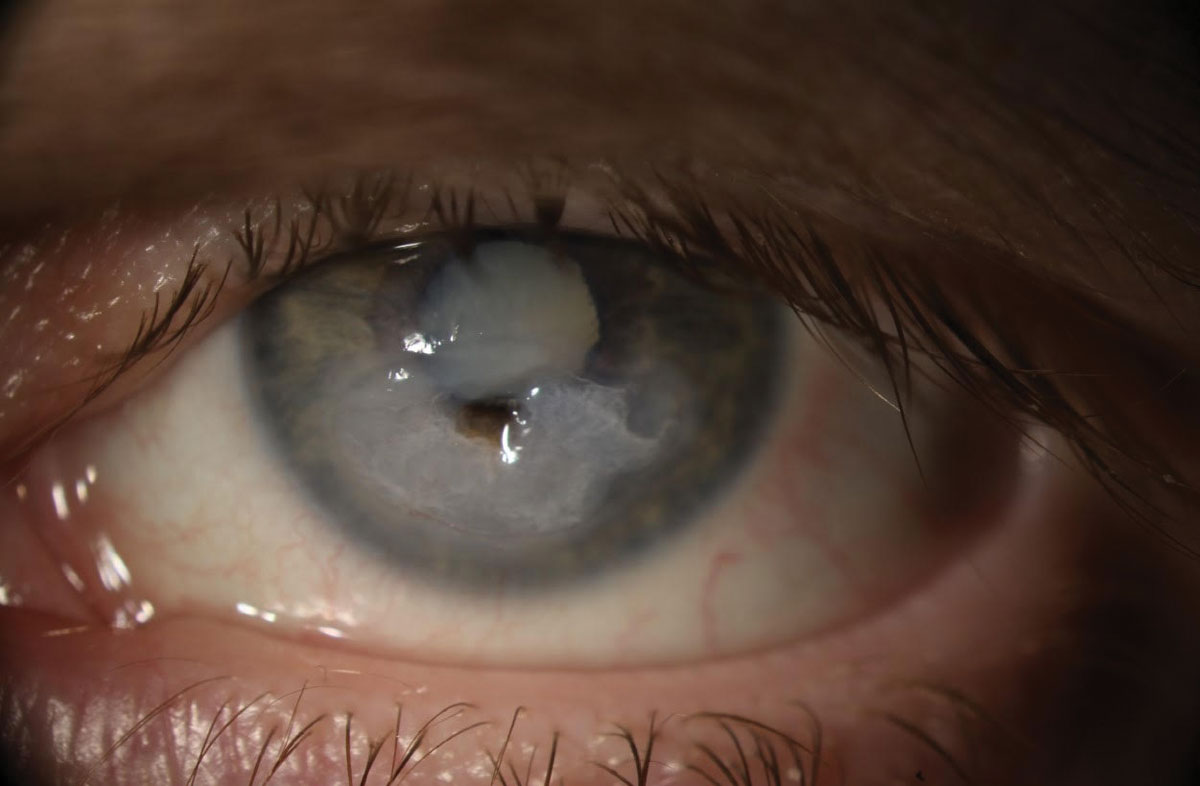 |
Nearly one in three patients with NK in this study also had herpetic keratitis while another third had diabetes. Photo: Megan Mannen, OD. Click image to enlarge. |
In an effort to more effectively pinpoint the characteristics of neurotrophic keratopathy (NK) in the United States, researchers recently published a number of different findings based on the IRIS Registry. The first: the prevalence of NK is 21.34 cases per 100,000 patients. They noted that visual acuity (VA) was significantly worse after NK diagnosis and associated with demographic characteristics, history of diabetes, corneal transplant and herpetic keratitis. NK was most commonly associated with herpetic keratitis and diabetes.
This retrospective database study included 31,915 eyes of 27,483 patients with NK. The mean age at initial diagnosis was 68, and 59% of patients were female.
NK presentation was unilateral in 58%, bilateral in 16% and unspecified in 26% of cases. Mean logMAR VA was 0.60 prior to diagnosis and 0.88 after. Most common concomitant diagnoses included herpetic keratitis (34%), diabetes (32%) and corneal dystrophy (14%). Common procedures for NK management included the use of amniotic membranes (30%), punctal plugs (30%) and bandage contact lenses (23%). Older age, male sex, Black race, Hispanic or Latino ethnicity, unilateral involvement and concomitant diagnoses of diabetes, corneal transplant or herpetic keratitis were significantly associated with worse VA.
“This is the largest available epidemiological study of NK, and our findings further the understanding of the burden and characteristics of NK in the United States.”
Bian Y, Ma KK, Hall NE, et al. Neurotrophic keratopathy in the United States: an IRIS Registry (Intelligent Research in Sight) Analysis. Ophthalmology. June 26, 2022. [Epub ahead of print]. |


